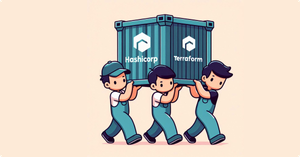Terraform is an open-source tool used for automating and managing cloud infrastructure through code.
It allows us to define the desired state of their infrastructure using a declarative configuration language called Hashicorp Configuration Language or HCL. This means we can specify in code what resources e need, how they should be configured, and their dependencies.
Terraform will then compare the desired state to the current state of the infrastructure and automatically takes the necessary actions to bring it in line with specifications.
This approach ensures that infrastructure changes are predictable and can be safely applied.
Requirements
To run the commands and steps provided in the this post, ensure you have the following:
- Docker engine installed
- Docker compose installed
- Sufficient permissions to run Docker containers
With the above requirements met, we can proceed.
Docker Pull Terraform
The first step is to download the Docker Terraform image. We can use the docker pull command as shown:
$ docker pull hashicorp/terraformRunning the Container
Once we have pulled the Terraform image, we can create an isolated Terraform container using the docker run command as;
$ docker run -i -t hashicorp/terraform:latest planWe can define a basic terraform config file as:
terraform {
required_version = ">= 0.11.1"
}
provider "google" {
credentials = file(var.gcp_credentials)
project = var.gcp_project
region = var.gcp_region
}
variable "gcp_credentials" {
description = "Path to the GCP credentials JSON file"
type = string
}
variable "gcp_project" {
description = "GCP project ID"
type = string
}
variable "gcp_region" {
description = "GCP region, e.g. us-east1"
default = "us-east1"
}
variable "gcp_zone" {
description = "GCP zone, e.g. us-east1-b"
default = "us-east1-b"
}
variable "machine_type" {
description = "GCP machine type"
default = "n1-standard-1"
}
variable "instance_name" {
description = "Name of the GCP instance"
default = "demo"
}
variable "image" {
description = "Image to build the instance from"
default = "debian-cloud/debian-9"
}
resource "google_compute_instance" "demo" {
name = var.instance_name
machine_type = var.machine_type
zone = var.gcp_zone
boot_disk {
initialize_params {
image = var.image
}
}
network_interface {
network = "default"
access_config {
// Ephemeral IP
}
}
}
output "external_ip" {
value = google_compute_instance.demo.network_interface[0].access_config[0].nat_ip
}
The above Terraform configuration provisions a compute instance in Google Cloud Platform.
Conclusion
This explored a basic steps on running Terraform in an isolated environment using Docker containers.

